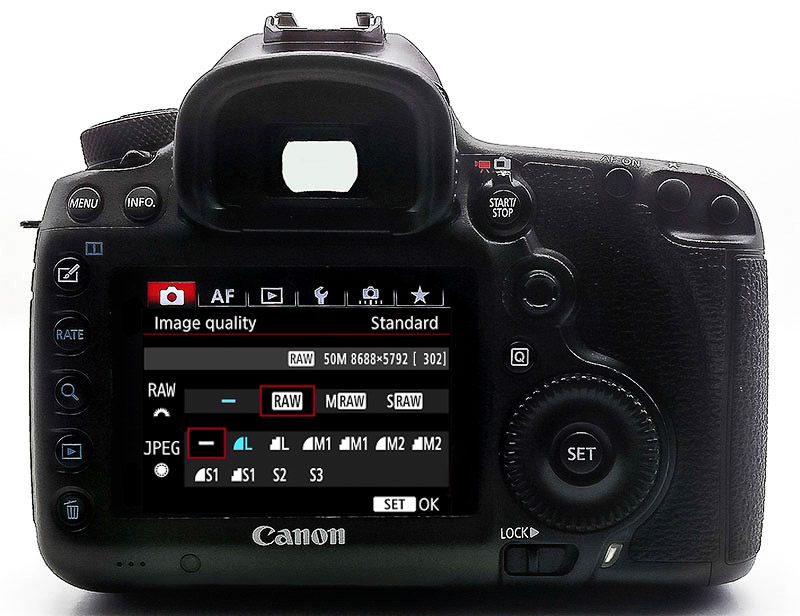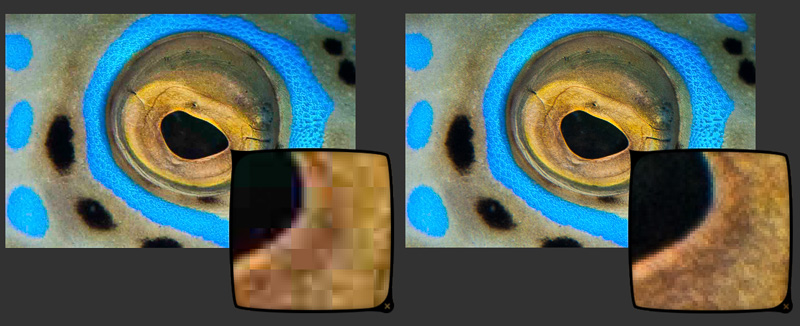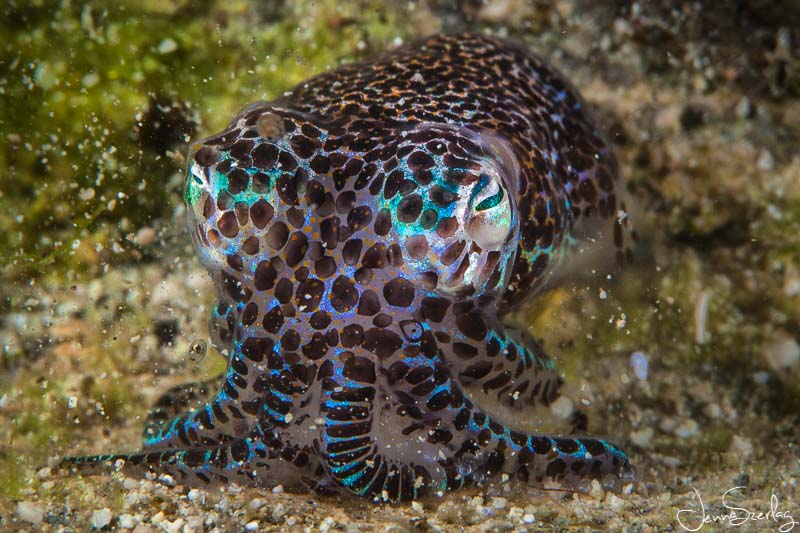Getting To Know Your Camera's Image Quality Formats
Compact, mirrorless and dslr cameras offer several file formats when it comes to recording your underwater images. The two most common are jpeg and RAW. Both formats offer levels of compression to choose from, each with their own benefits.
File Formats
The difference between jpeg and RAW is simple. It comes down to what information is recorded and how the camera stores the photo. Jpeg is a type of lossy compressed format. Information is removed when recording the image in trade for a smaller file. RAW produces the highest quality image saving the exact data that the camera captured. It is the larger of the two files.

RAW (.CRW .NEF .DNG .ARW .ORF)
A RAW file is an unprocessed format that is not manipulated in any way. There are only a handful of camera settings such as focus and exposure that affect the data. A RAW file allows YOU to have control over the editing process with no automated in-camera enhancements. All original information from the camera sensor will be stored if the camera is set to record as an uncompressed or as a lossless RAW. This not only allows for the most versatile editing but also creates the highest quality image.
• Highest Quality Image
• Most Potential for Post Process Editing
• No Automatic In-Camera Manipulation
• Option for Maximum Resolution
JPEG (.JPG .jpg .jpeg)
Jpegs are the most popular format used across all devices. They are small, compressed files made for easy sharing via smart phones, uploading and social media. The camera applies automatic edits to a Jpeg like saturation, sharpening and contrast before compressing it into a ready to view format. The benefit is that little editing, if any, is needed in post process. The downside is the missing information within the file which would be most noticeable if the image is enlarged, printed or if further edits are applied.
• Minimal Post Processing Needed
• Maximum Potential for Frames Per Second
• Minimal Hard Drive Space Needed
• Ready to View Across Most Platforms
Have you ever tried to lighten the shadows of a Jpeg and immediately noticed noise and quality degradation? This could be because data was disregarded by the camera when recording the image. It directly affects the image quality. If you choose to shoot jpegs, it’s best to save them at maximum resolution with minimum compression.
Compression and File Size
There are two ways to create a smaller file: Compression and Resolution. Both are often applied in the post process workflow but you’ll also find these options in the camera’s menu.
• Uncompressed
• Lossless Compression
• Lossy Compression
• Resolution
Compression is an algorithm used to shrink a file to minimize the space it requires on a media card or hard drive. Uncompressed means the files are large and unaltered. Lossy compression omits certain redundant data that is unrecoverable in trade for a smaller file size. Lossless compression is a method where original data is restored with no reduction in quality. Consult your camera’s manual for interpretation as each brand has slight variations.
Resolution is the detail of your image measured in pixels. Menu options are commonly listed as small, medium and large or (standard, fine and extra fine) and will have the megapixels and pixel dimensions next to each choice. The recorded pixel count is adjusted according to each option. As the resolution decreases so does the file size.

Reducing the size of a file sacrifices image quality. Take these two images for example. They are both high res files with the same dimensions but the one on the left is a compressed Jpeg and the right is a RAW. Take a close look at the inset showing the detail closeup. Lossy compression greatly reduces the image quality. This alone is reason enough to shoot lossless or uncompressed RAW so that the camera does not immediately degrade your image when it records the file.
Conclusion
File types play an important role in preserving your images. Why would you choose to shoot small files? They record faster, enable the camera’s maximum burst (frames per second) and take up the least amount of cloud storage and hard drive space. By choosing jpeg you could also cut the post process workflow time and depend on the camera’s automatic resources. But the best choice to preserve the integrity of your image is to shoot RAW. Undecided? A solution is to not choose either - and have your camera record both formats!
RECOMMENDED ARTICLES
SUPPORT THE UNDERWATER PHOTOGRAPHY GUIDE:
The Best Service & Prices on u/w Photo Gear
 Visit Bluewater Photo & Video for all your underwater photography and video gear. Click, or call the team at (310) 633-5052 for expert advice!
Visit Bluewater Photo & Video for all your underwater photography and video gear. Click, or call the team at (310) 633-5052 for expert advice!
The Best Pricing, Service & Expert Advice to Book your Dive Trips
 Bluewater Travel is your full-service scuba travel agency. Let our expert advisers plan and book your next dive vacation. Run by divers, for divers.
Bluewater Travel is your full-service scuba travel agency. Let our expert advisers plan and book your next dive vacation. Run by divers, for divers.
































